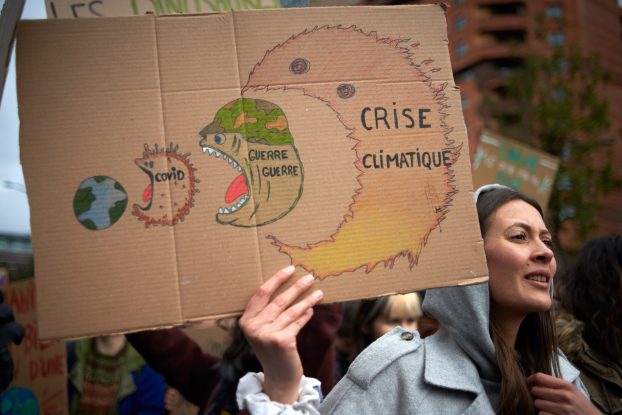How to Deal with Climate Grief and Eco-Anxiety

As the effects of climate change become more and more visible in real time, many people are experiencing related effects on their emotional and mental health. Therapists are also starting to specifically treat climate grief and anxiety — with many noticing a sharp uptick in patients with these concerns. So, what exactly is climate grief? And how can you cope with these feelings?
What Is Climate Grief?
In a nutshell, climate grief, climate anxiety and related terms are forms of emotional distress related to climate change and environmental losses. Most people associate grief with the loss of a loved one. Climate grief is also a psychological response to loss or anticipated loss — but in this case the loss is ongoing and happening on such an enormous scale that it’s hard to process.
Climate change can affect us in many different ways. You may feel a range of emotions, including sadness, guilt, frustration, fear, anger, anxiety and helplessness.
Types of Climate Grief
Transitional climate grief is a slowly growing awareness of gradual changes and losses. This form of climate grief involves anticipating future losses and feeling uncertain about how extreme the changes will be. Climate-related disasters such as wildfires or flooding may also lead to more immediate feelings of grief and trauma.
Depending on where you live, you may have feelings of grief for certain seasons or geographic features. People all over the world are inventing new terminology to describe these feelings.
In traditionally snow-covered countries like Iceland and Finland, “winter grief” is becoming more common due to the loss of snow. The term “solastalgia” can describe a feeling of homesickness without leaving home, because everything around you is changing.

Climate Grief Is Becoming Widespread
Several studies have found that climate grief and climate anxiety are widespread, with some therapists noting that it’s becoming normal to feel this way. Research also shows that young adults have higher levels of climate anxiety.
A recent global study of young people ages 16 to 25 found that young adults and children are particularly concerned about their future in the face of climate change. More than 75% believe the “future is frightening” and 84% think that “people have failed to care for the planet.” Young people also sometimes cite climate-related concerns as a reason not to have children.
Certain groups are uniquely affected by climate grief. Indigenous communities may be more affected because they often live in areas with more severe climate change impacts and often have very strong connections to their local environment. Environmental scientists are also more likely to be affected because they’re so constantly focused on climate change.

How to Process Climate Grief and Eco-Anxiety
If you think you may be experiencing climate grief or related emotions, know that you are not alone. The good news is that there are a number of steps you can take to process your feelings.
Join in Climate Grief Ceremonies
Historically, there have been no specific rituals or social customs that help people to deal with climate grief. However, this is changing. For example, groups in Iceland and Switzerland have held ceremonies to mourn the loss of glaciers.
These types of social practices centered around grief can help people to emotionally process what’s happening. They also offer opportunities to share feelings through creative outlets like poetry readings and speeches.
Try Therapy
Sharing your climate-related thoughts and concerns with a trained mental health specialist can be very helpful — especially if you aren’t able to share these feelings with like-minded friends or family. Therapists are adapting well-known mental health treatments like cognitive behavioral therapy to work for climate grief.
A therapist can help you name, understand and process your emotions. Check out this directory of climate-aware therapists to find a specialist near you.
Practice Mindfulness
A daily practice of mindfulness can enhance feelings of well-being, ease stress and help calm negative emotions. Being more mindful can also help you make conscious choices to live a more climate-friendly lifestyle. If you’re just getting started with mindfulness, try these simple exercises for beginners or try a mindful meditation app.
Join a Like-Minded Group
Connecting with like-minded people can be cathartic, as you realize that other people feel the same way you do. Eco-grief groups are already popping up on university campuses. There’s also a global Good Grief Network dedicated to climate and eco-grief. Teaming up with like-minded people can also be a great way to move from anxiety to inspired action as you explore solutions together.
Act for the Climate
Do one thing each day to benefit the climate. This is particularly important for kids who are suffering from climate grief. Giving children a chance to make climate-related decisions can help relieve their feelings of anxiety. After all, acting for change is more hopeful and empowering than simply stewing in your negative emotions. If you’re a parent looking to help your kids deal with climate grief, check out these resources.
Our emotions can overwhelm us, or they can inspire us to ask new questions and take new steps forward. Hopefully these tips can help you find different ways to be in touch with your emotions and use your feelings as inspiration for positive action.





